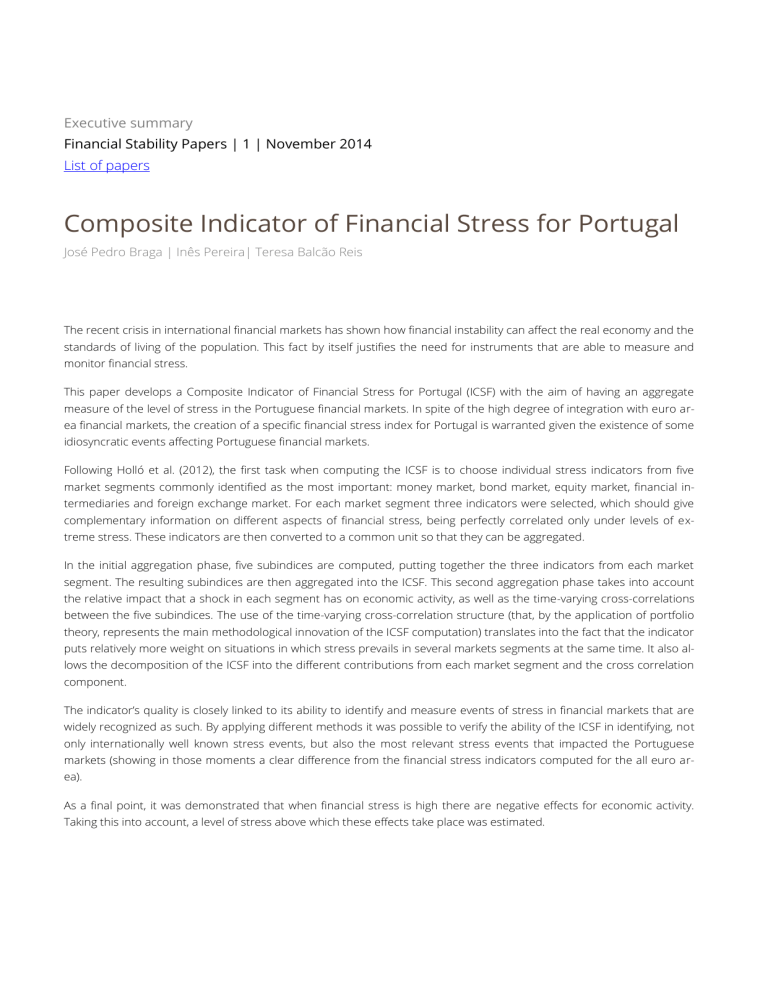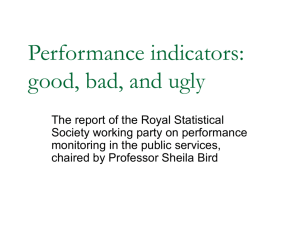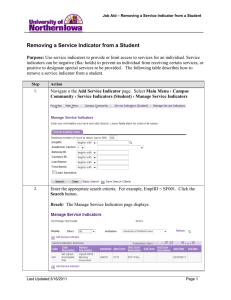Composite Indicator of Financial Stress for Portugal Executive summary

Executive summary
Financial Stability Papers | 1 | November 2014
List of papers
Composite Indicator of Financial Stress for Portugal
José Pedro Braga | Inês Pereira| Teresa Balcão Reis
The recent crisis in international financial markets has shown how financial instability can affect the real economy and the standards of living of the population. This fact by itself justifies the need for instruments that are able to measure and monitor financial stress.
This paper develops a Composite Indicator of Financial Stress for Portugal (ICSF) with the aim of having an aggregate measure of the level of stress in the Portuguese financial markets. In spite of the high degree of integration with euro area financial markets, the creation of a specific financial stress index for Portugal is warranted given the existence of some idiosyncratic events affecting Portuguese financial markets.
Following Holló et al. (2012), the first task when computing the ICSF is to choose individual stress indicators from five market segments commonly identified as the most important: money market, bond market, equity market, financial intermediaries and foreign exchange market. For each market segment three indicators were selected, which should give complementary information on different aspects of financial stress, being perfectly correlated only under levels of extreme stress. These indicators are then converted to a common unit so that they can be aggregated.
In the initial aggregation phase, five subindices are computed, putting together the three indicators from each market segment. The resulting subindices are then aggregated into the ICSF. This second aggregation phase takes into account the relative impact that a shock in each segment has on economic activity, as well as the time-varying cross-correlations between the five subindices. The use of the time-varying cross-correlation structure (that, by the application of portfolio theory, represents the main methodological innovation of the ICSF computation) translates into the fact that the indicator puts relatively more weight on situations in which stress prevails in several markets segments at the same time. It also allows the decomposition of the ICSF into the different contributions from each market segment and the cross correlation component.
The indicator’s quality is closely linked to its ability to identify and measure events of stress in financial markets that are widely recognized as such. By applying different methods it was possible to verify the ability of the ICSF in identifying, not only internationally well known stress events, but also the most relevant stress events that impacted the Portuguese markets (showing in those moments a clear difference from the financial stress indicators computed for the all euro area).
As a final point, it was demonstrated that when financial stress is high there are negative effects for economic activity.
Taking this into account, a level of stress above which these effects take place was estimated.






